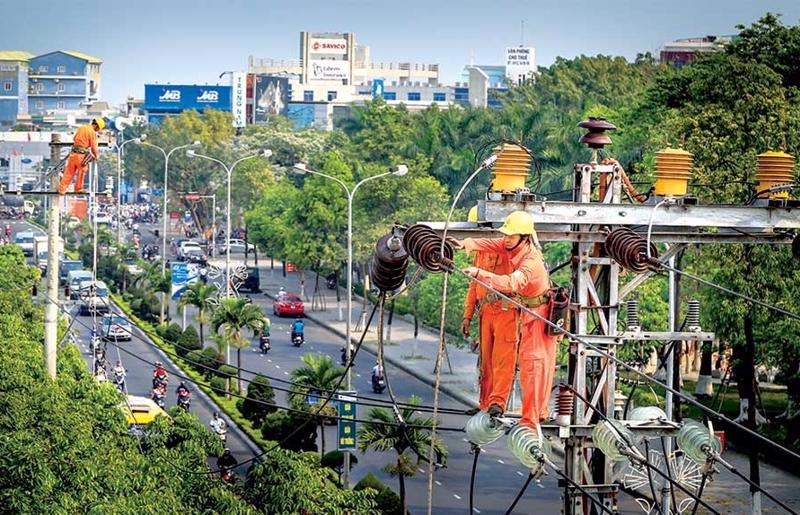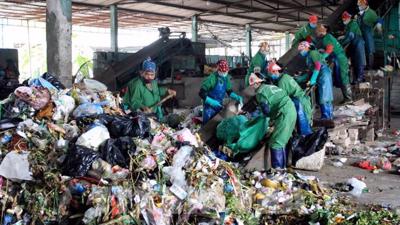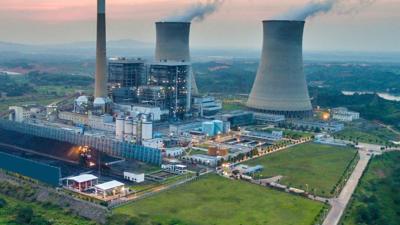Optimizing energy use
Mr. Dong Mai Lam, Cluster President - Vietnam & Cambodia, at Schneider Electric, tells Vietnam Economic Times / VnEconomy’s Song Hoang how the multinational giant has contributed to accelerating the development of Vietnam’s electricity industry and touches on the company’s future direction.

Having been with Schneider Electric for many years, you have worked on several significant projects in Vietnam. How has Vietnam changed over the past 30 years, and what change has made the biggest impression on you?
Schneider Electric was fortunate to be one of the first companies to accompany the Vietnamese Government in the early stages of the country’s modernization process. Looking back at the significant changes along Vietnam’s development journey, the electricity and energy sectors have made remarkable strides forward. In 1995, Vietnam established its first 500-kV power transmission line, designed to transfer surplus electricity from the north to the south, to boost the economies of both regions.
Just five years later, in 2000, Vietnam had risen to the top 6 in ASEAN in power consumption. By 2001, it had surpassed Singapore, and then the Philippines in 2006, Malaysia in 2015, and Thailand in 2017. Since 2017, it has become the second-largest electricity-consuming country in the region, behind only Indonesia.
The continuous growth in electricity demand is a testament to the rapid pace of Vietnam’s growth. On this journey, Schneider Electric is proud to have provided solutions for the 500-kV North-South power transmission line from 1992 to 1994, in collaboration with Vietnam Electricity (EVN), to ensure the safe operation of the power system. This is a memorable milestone, as the 500-kV line continues to make a significant and positive impact on Vietnam’s economy, and we are proud to be part of Vietnam’s historical story.
Alongside the growth of the electricity sector, Vietnam’s energy industry is also undergoing strong digital transformation with significant advances. Perhaps the most notable of these is the shift from traditional energy sources to renewable and sustainable energy sources. This transition not only helps mitigate negative environmental impacts and ensures energy security for the future but also supports energy-intensive sectors, particularly the electricity industry, in becoming more sustainable. In the next 30 years, technology and data will be key elements in managing and developing a modern energy system.
In response to the continually changing market, Schneider Electric has undergone a transformation in its business model over the past three decades in Vietnam, focusing on becoming a bridge between progress and sustainability by empowering businesses to practice sustainable development, improving energy and resource efficiency through the power of digitalization, electrification, and automation to drive digital transformation and achieve the country’s commitment to net-zero emissions by 2050.
Looking ahead, we still face many challenges. The support and partnership of our customers and partners will be the driving force behind our sustainable development. Schneider Electric Vietnam has adapted flexibly, resiliently, and quickly, evolving from a company that only provided electrical equipment to one that offers solutions in digitalization, electrification, and automation, contributing practical solutions to the emissions reduction process and digital transformation in Vietnam.
What key factors have enabled Vietnam to attract major global corporations, with Nvidia being the most recent example of a company choosing to partner with the country?
In 2020, the Ministry of Information and Communications reported that Vietnam’s digital economy contributed 12 per cent to the country’s GDP. By 2023, that figure had risen to 16.5 per cent, with an annual growth rate of over 20 per cent. Vietnam is poised to have the fastest-growing digital economy in ASEAN by 2025.
Industry 4.0 and the rise of the Internet of Things (IoT) have revolutionized the use of data in various sectors of society, particularly in business and manufacturing. As a result, the digital economy has emerged as a defining characteristic of economic development, a trend that numerous countries are embracing and advancing.
In Vietnam, the digital economy presents a significant opportunity to bridge developmental gaps. This vision is reflected in government policy, which, in 2024, is focusing on the comprehensive development of four key pillars: industry, information and communications technology, digitizing economic sectors, and advancing digital governance and data. Within this framework, data is being recognized as a vital production factor, an essential input for all economic activities. Both industry and information technology are expected to drive new production forces that will accelerate the digital transformation of economic sectors.
The digitalization of economic sectors is also one of the five critical trends shaping Vietnam’s sustainable future, a topic I discussed at the Vietnam Innovation Summit last August. These five trends, including global rebalancing, the shift in prosperity, climate change, digitalization, AI, and the energy transition, are interconnected and mutually influential.
With these macro trends unfolding and backed by Vietnam’s inherent advantages, such as a strong emphasis on technology, innovation, and sustainability, the country is increasingly positioning itself as an attractive and rapidly-developing hub for global corporations. This is further evidenced by the country’s high economic growth, which makes it a promising market for both investment and business expansion.
Vietnam’s young, dynamic workforce, coupled with an increasing pool of highly-skilled professionals, especially in technology and manufacturing, has also played a pivotal role in its rise as a digital economy leader within ASEAN. In addition, the government has proactively created a business-friendly environment, with favorable policies that include tax incentives and investment support, particularly in the energy sector, where there is a clear commitment to sustainability and the goal of achieving net-zero emissions by 2050.
Strategically located in Southeast Asia, Vietnam serves as an ideal gateway for companies looking to tap into the broader Asian market and supply chains. The country has also leveraged its participation in numerous free trade agreements (FTAs), enhancing its appeal among foreign investors by reducing tariffs and fostering trade. Lastly, ongoing improvements in infrastructure, from transportation to communications networks, provide the necessary foundation for businesses to thrive.
At Schneider Electric, we are committed to being a trusted partner for both the Vietnamese Government and local businesses. We are focused on driving digital, electrification, and automation solutions that aim to optimize energy use while supporting the country’s efforts to reduce emissions.
Vietnam’s policies and development directions are considered highly ambitious, particularly the goal of net-zero emissions by 2050. How will this goal impact the country’s sustainable development and growth?
Looking ahead over the next 30 years and beyond, we at Schneider Electric expect to continue playing a pivotal role as a leader in technology and sustainable development, contributing to driving digital transformation and sustainable growth in Vietnam.
Among the global and local trends currently shaping the business landscape, we see two key trends that are significantly influencing our business model: digitalization and energy transition. These areas have been our primary focus in recent years and will continue to be at the heart of our development strategies moving forward, influencing our policies.
We foresee the future as being driven by more powerful programs and solutions that we will bring to the Vietnamese market. Regarding digital transformation, we are committed to promoting effective models to accelerate the pace and strength of the transition into the new era.
We aspire to be a partner of Vietnam and its businesses in the journey towards achieving the government’s goal of net-zero emissions by 2050. This is how we are shaping our business model in the years to come with solutions in automation, digitalization, and electrification.
Let’s step into 2025 with an optimistic mindset, ready to tackle new challenges and together build a more sustainable future.







![[Interactive]: Economic overview - April 2025](https://media.vneconomy.vn/400x225/images/upload/2025/05/06/5a245778-67b1-4874-a8dc-21f8cfed62a6.png)